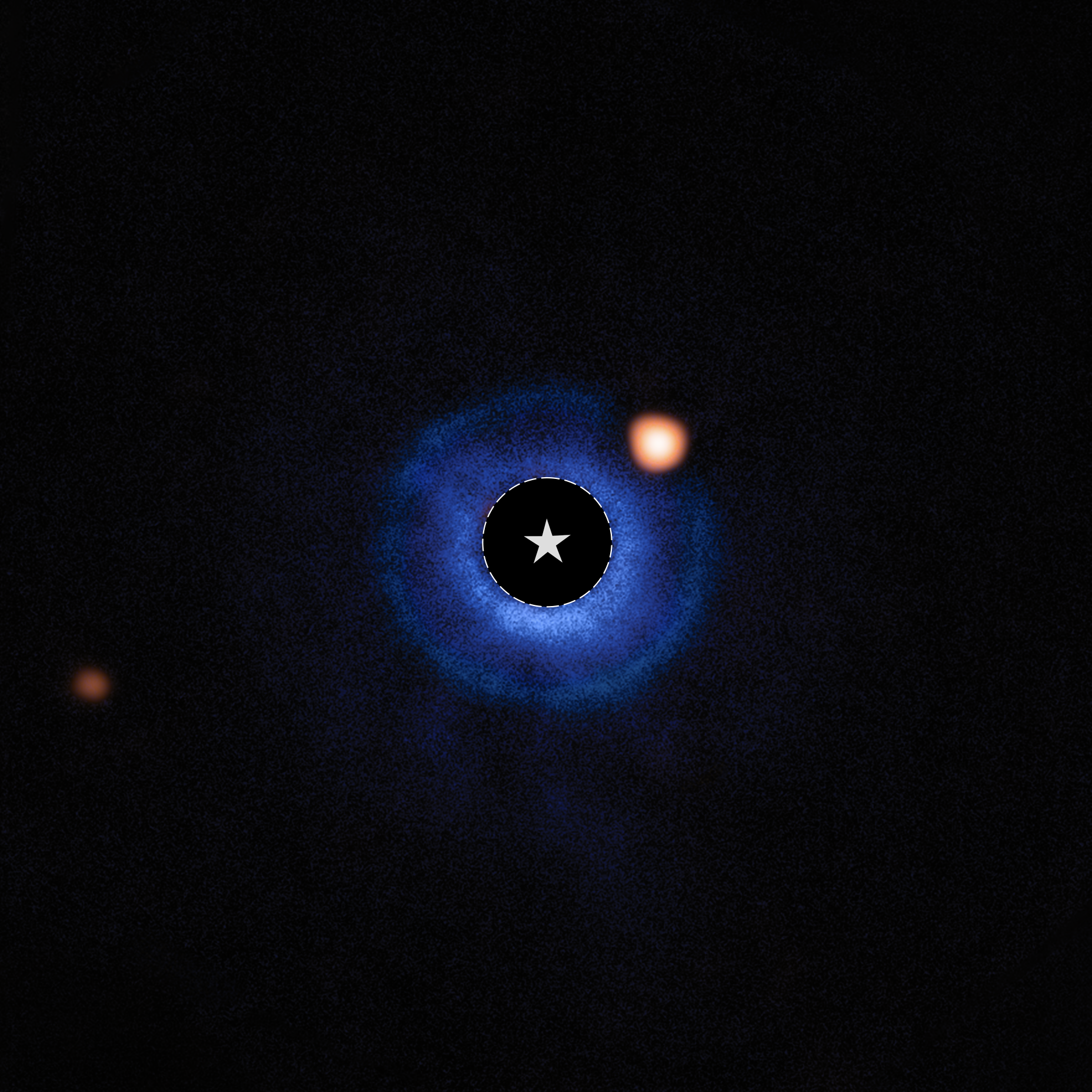1 min read
TWA 7 (MIRI + VLT Image)

Astronomers using NASA’s James Webb Space Telescope have captured compelling evidence of a planet with a mass similar to Saturn orbiting the young nearby star TWA 7. In this image combining ground-based data from ESO’s Very Large Telescope (VLT) and data from Webb’s MIRI (Mid-Infrared Instrument), light from the star TWA 7 has been subtracted. The location of the star is marked with a circle and a star symbol at the center of the image. The blue color represents data from the VLT’s SPHERE instrument, which showcases the location of the disk surrounding the host star. MIRI data is shown in orange. The bright orange spot to the upper right of the star is the source identified as TWA 7 b, within the debris disk. The more distant orange spot visible in the left of the image is an unrelated background star.
About the Object
- R.A. PositionR.A. PositionRight ascension – analogous to longitude – is one component of an object's position.10:42:30.102
- Dec. PositionDec. PositionDeclination – analogous to latitude – is one component of an object's position.-33:40:16.23
- ConstellationConstellationOne of 88 recognized regions of the celestial sphere in which the object appears.Antlia
- DistanceDistanceThe physical distance from Earth to the astronomical object. Distances within our solar system are usually measured in Astronomical Units (AU). Distances between stars are usually measured in light-years. Interstellar distances can also be measured in parsecs.About 110 light-years
About the Data
- Data DescriptionData DescriptionProposal: A description of the observations, their scientific justification, and the links to the data available in the science archive.
Science Team: The astronomers who planned the observations and analyzed the data. "PI" refers to the Principal Investigator.This image was created with Webb data from proposal: 3662 (A.M. Lagrange)
- InstrumentInstrumentThe science instrument used to produce the data.MIRI Coronagraph
- Exposure DatesExposure DatesThe date(s) that the telescope made its observations and the total exposure time.21 June 2024
- FiltersFiltersThe camera filters that were used in the science observations.F1140C
- Object NameObject NameA name or catalog number that astronomers use to identify an astronomical object.TWA 7
- Object DescriptionObject DescriptionThe type of astronomical object.Exoplanet
- Release DateJune 25, 2025
- Science ReleaseLikely Saturn-Mass Planet Imaged by NASA Webb Is Lightest Ever Seen
- CreditImage: NASA, ESA, CSA, Anne-Marie Lagrange (CNRS, UGA), Mahdi Zamani (ESA/Webb)

The Webb image is a composite of separate exposures acquired by the MIRI instrument and ground-based observations from the Very Large Telescope's SPHERE instrument. The color results from assigning different hues (colors) to each monochromatic (grayscale) image associated with an individual filter. In this case, the assigned colors are: Blue: VLT SPHERE, Orange: F1140C
Share
Details
Laura Betz
NASA’s Goddard Space Flight Center
Greenbelt, Maryland
laura.e.betz@nasa.gov
NASA, ESA, CSA, Anne-Marie Lagrange (CNRS, UGA), Mahdi Zamani (ESA/Webb)






























